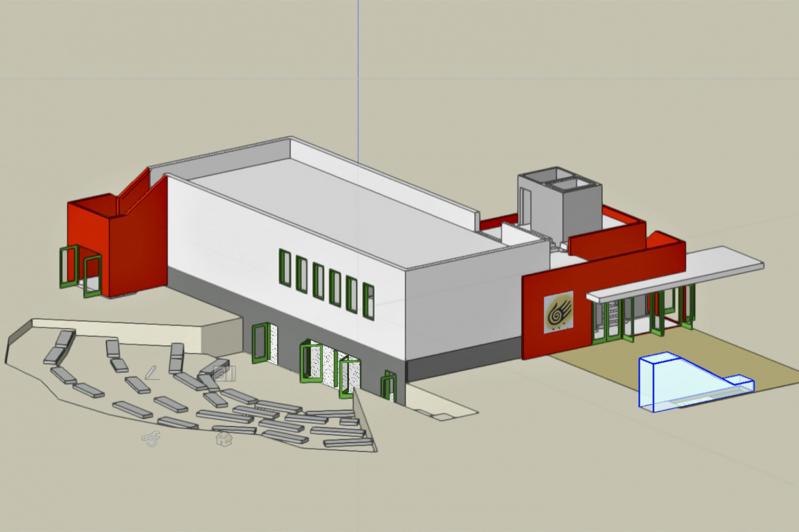The Hayground School is planning a major capital project that will add a new arts and science building and an amphitheater to its 12.8-acre campus in Bridgehampton.
The new building, which has been in the works for six years, will cost the school $3.1 million. Of that amount, $2.1 million has already been raised. A fund-raiser, on Sunday, launched Hayground’s push for the remaining $1 million.
“The school has a long history of integrating arts and sciences,” Tony Hitchcock, the school’s treasurer, said of plans for the new building.
As Hayground began to think about a new space for arts, David Berridge, the architect working on the project, said the space would need to be 50 percent larger than the current art classroom to fit the school’s demands.
Eventually, the vision expanded. The school wanted to incorporate science programs into the new project, and a donor proposed a library, which will be on the basement level of the two-story building, covered by an adjoining lawn. On the rooftop, there will be solar panels and a garden of herbs, which can be used for the school’s robust culinary education program.
The current art room will be repurposed. “We’ll take that space and have one or two more classrooms, which we need,” said Arjun Achuthan, the faculty chairman.
On top of the $3.1 million for the new building, school leaders estimate it will cost about $400,000 to renovate the current art classroom into a traditional classroom.
In addition to its academic programs, the school has a summer camp that supports its year-round operations and hosts 650 campers, with still more on a waiting list. The camp’s director, Doug Weitz, asserted that it is the largest employer of young people on the East End.
Outside of the proposed arts and science building, Hayground plans an amphitheater that can be used for its annual Shakespeare program for students, a program that allows everyone “from faculty to 3-year-olds to get up onstage.”
The amphitheater “will expand the community outreach aspect of what we do,” said Mr. Hitchcock. Right now, he said, the school and camp have trouble accommodating speakers and performers, as they lack a dedicated space for those programs. In the future, he hopes to see the amphitheater used for community events including performances.
As for the physical construction, Hayground is working with John Barrows of the P3 Builder Group. Mr. Barrows has been involved in environmentally conscious construction for about 40 years.
“With this building, there had always been the idea or philosophy to be as energy-efficient as possible, as close to net zero as we could possibly make it,” and with the “lowest carbon footprint,” said Mr. Barrows.
Certain materials — steel, concrete, and insulation among them — Mr. Barrows said, increase the carbon footprint of a building.
The building has been in the works since before the Covid-19 pandemic. “We did all of our planning, we went to the [Southampton] Town Planning Board, got site plan approval, and Covid broke out very soon after that. And we decided this was not the right time to launch a multimillion-dollar campaign,” said Mr. Hitchcock.
“The good thing that happened during that gestation period is that we got repeated input from all aspects of our community, especially our faculty. There’s no point in designing a school building that doesn’t meet the needs of faculty,” Mr. Hitchcock said.
As for navigating the project through the planning process, the school has not encountered significant trouble. “We had an initial submission three or four weeks ago. They liked it, loved it,” said Mr. Berridge. “If we get the full endorsement of the full board, everything else should go fairly smoothly, we hope.”
The school hopes its plans will be approved by December, after which it can break ground.
“There is a short-term way of looking at this and a long-term way of looking at this,” said Mr. Weitz, referring to Hayground’s vision for a generational experience, meaning that multiple generations of one family attend the school and camp. The building, he said, is an example of the school taking the long-term view.
“No one’s going to donate to a building just because they like buildings,” said Mr. Weitz. “They have to believe in the dream of what we’re trying to do, and what this building helps us to be able to do.”

